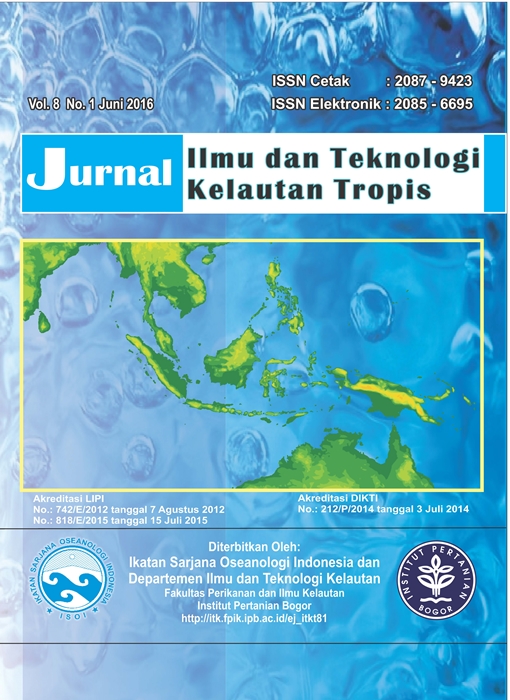Abstract
ABSTRACT
Karimunjawa National Park (KNP) consists of 7 zones i.e., core, protection, tourism, residence, rehabilitation, cultivation, and traditional fisheries utilization zone. Fishing activities in the traditional fisheries utilization zone (TFUZ) was not optimal because of limited of fishing zone information. The objective of this study was to determine the fishing zone based on major fish for each fishing gear. This study was conducted in KNP from October to December 2009. The major fish resources were determined through analyses of comparative performance index (CPI). Fish resource potential was analyzed by bio-economic model. The existence of fish resources were used as a basis of arrangement of fishing gear arround the fishing zone, through consideration of fishing gear characteristics, the characteristics of waters, the probabilities of conflict, degradation of fish resources, and regulations. Map of fishing zones were created using geographicl information system. Results showed that potential fishes around the TFUZ were reef fishes such as trevallies, yellow tail, and grouper. The potency of reef fishes was about 149 tons/year and pelagic fish of 19,080 tons/year. Fishing zones around the TFUZ consisted of (1) area of 0-3 miles from coastal line which was allocated as the fishing zone of reef fishes using hand line and fish trap, (2) area of 3-4 miles from coastal line which was allocated as demersal fishing zone using bottom gillnet, (3) area of 0-4 miles from coastal line which was allocated as pelagic fishing zone using surface gillnet, and (4) area that more than 4 miles which was allocated as pelagic fishing zone using dynamic fishing gear (troll line), and boat lift net.
Keywords: fishing zone, reef fish, pelagic fish, gillnet, Karimunjawa
Authors
This work is licensed under a Creative Commons Attribution 4.0 International License.
Jurnal Ilmu dan Teknologi Kelautan Tropis i is an open-access journal, meaning that all content is freely available without charge to the user or their institution. Users are allowed to read, download, copy, distribute, print, search, or link to the full texts of the articles in this journal without needing to request prior permission from the publisher or the author.
All articles published by Jurnal Ilmu dan Teknologi Kelautan Tropis are licensed under the Creative Commons Attribution 4.0 International License. This allows for unrestricted use, distribution, and reproduction in any medium, provided proper credit is given to the original authors.
Authors submitting manuscripts should understand and agree that the copyright of published manuscripts is retained by the authors. Copyright encompasses the exclusive rights of authors to reproduce, distribute, and sell any part of the journal articles in all forms and media. Reproduction of any part of this journal, its storage in databases, and its transmission by any form or media is allowed without written permission from Jurnal Ilmu dan Teknologi Kelautan Tropis.


